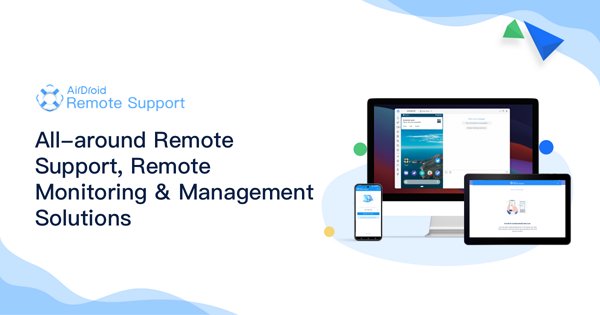Best Practices for Establishing a Positive Remote Work Culture in Your Organization
Remote work has become a new norm for many organizations in the wake of the global pandemic. However, working remotely poses many challenges for both employers and employees, such as communication gaps, isolation, lack of motivation, and reduced productivity.
Therefore, organizations must establish and maintain a positive remote work culture that fosters collaboration, trust, engagement, and performance among their remote teams.
In this article, we will explore what remote work culture is, how to measure it, and what the best practices and tools are to build a positive remote work culture for your organization.
What Is Remote Work Culture
Remote work culture is the set of values, norms, behaviours, and expectations that shape how remote workers interact with each other and with their organization. It is influenced by factors such as the organization's vision, mission, goals, policies, processes, and tools, as well as the individual characteristics, preferences, and needs of the remote workers.

A positive remote work culture promotes openness, transparency, clarity, and flexibility among the remote workers and the organization. These criteria can be measured by indicators such as:
- Openness: The degree to which remote workers share their ideas, opinions, feedback, and emotions and with the organization.
- Transparency: The degree to which remote workers have access to relevant information, resources, and support from the organization and each other.
- Clarity: The degree to which remote workers have clear and consistent expectations, roles, responsibilities, and objectives from the organization and each other.
- Flexibility: The degree to which remote workers have autonomy, choice, and control over their work schedule, location, and methods.
Best Practices: How Organizations Can Build a Positive Remote Work Culture
Building a positive remote work culture requires intentional and consistent efforts from the organization and the remote workers. Here are some of the best practices that can help organizations create and maintain a positive remote work culture:
Establish Clear Mission and Goals
The organization should communicate its mission and goals to the remote workers and align them with their individual and team goals. This helps to create a shared vision and purpose among the remote workers and the organization and to motivate and inspire them to work towards a common objective.

Develop Remote Work Strategies
The organization should develop and implement remote work strategies that suit its needs and objectives and that address the challenges and opportunities of remote work. These strategies should include policies, processes, and guidelines for remote work, such as communication, collaboration, performance management, feedback, recognition, and rewards.
Improve Onboarding Process
The organization should improve its onboarding process for remote workers by providing them with adequate training, orientation, and support. This helps to familiarize them with the organization's culture, values, norms, and expectations and to integrate them with their team and the organization.

Conduct Regular Face-to-Face Meetings
The organization should conduct regular face-to-face meetings with the remote workers, either in person or through video conferencing. This helps to build rapport, trust, and camaraderie among the remote workers and the organization and to foster a sense of belonging and community. It also helps to facilitate communication, collaboration, and feedback among the remote workers and the organization.
Collect and Listen to Employee Feedback
The organization should collect and listen to employee feedback from remote workers, either through surveys, polls, interviews, or other methods. This helps to understand the needs, preferences, challenges, and satisfaction of the remote workers and to identify and address any issues or concerns that may affect their remote work experience and performance. It also helps to show appreciation and recognition for the remote workers and their contributions and to involve them in the organization's decision-making process.

Enable Asynchronous Communication
The organization should enable asynchronous communication among the remote workers and the organization, such as email, chat, or other tools. This helps to accommodate the different time zones, schedules, and work styles of the remote workers and to allow them to work at their own pace and convenience. It also helps to reduce interruptions, distractions, and stress for remote workers and to increase their productivity and efficiency.
Organize Remote Group Activities
The organization should organize remote group activities for the remote workers, such as virtual coffee breaks, happy hours, games, quizzes, or other events. This helps to create fun moments for the remote workers and to enhance their social and emotional well-being. It also helps to strengthen the bonds, relationships, and teamwork among the remote workers and the organization and to boost their morale and engagement.

Improve the Incentive System
The organization should improve its incentive system for remote workers by providing them with fair and competitive compensation, benefits, and perks. This helps to attract and retain the best talent for the organization and to reward and motivate the remote workers for their performance and achievements. It also helps to show respect and appreciation for the remote workers and their value to the organization and to foster a culture of excellence and accountability.
Ensure Work-Life Balance
The organization should ensure work-life balance for the remote workers by respecting their boundaries, privacy, and personal time. This helps to prevent burnout, fatigue, and stress for remote workers and to enhance their physical and mental health. It also helps to support the personal and professional growth and development of remote workers and to encourage them to pursue their passions and interests outside of work.

Use the Right Tools
The organization should use the right tools to facilitate and support remote work for the remote workers and the organization. These tools should include software, hardware, and platforms that enable communication, collaboration, productivity, and security for remote work. Some of the essential tools to complete a strong remote work culture are discussed in the next part.
Essential Tools to Complete a Strong Remote Work Culture
Tools are an integral part of remote work, as they help to bridge the gap between remote workers and the organization and enhance the quality and efficiency of remote work. Here are some of the essential tools that can help to complete a strong remote work culture:
Remote Support Software
Remote support software is a tool that helps business technicians solve technical problems encountered by employees working remotely. It allows the technicians to access and control the remote devices of the employees, such as computers, smartphones, or tablets, and to provide them with guidance, assistance, and troubleshooting.
One of the best mobile device-focused remote support software available in the market is AirDroid Remote Support, which offers features such as screen sharing, live chat, remote control, file transfer, AR camera, and more. AirDroid Remote Support is easy to use, secure, and reliable, and it can help to improve the efficiency and satisfaction of remote workers and technicians.

Key Features of AirDroid Remote Support
- AR Camera & 3D Marker: Allows you to see through the remote workers' device camera and guide remote workers by placing 3D markers onto real-world objects.
- Tutorial Gesture: Swipe or tap on the shared screen, the tutorial gesture will appear on remote worker's device. (Only available for Android devices)
- Live Chat via Voice Call and Voice/Text Message: Tackle and resolve complex issues by communicating directly with real-time voice chat and screen viewing. If remote worker is not available to take a call, you can communicate through voice messaging or text.
- Unattended Android Access: Under the unattended mode, you can connect and remote control a device without consent from the device end for maintenance purposes.
Unified Communications Platform
A unified communications platform is a tool that integrates various modes of communication, such as voice, video, chat, email, and more, into a single platform. It allows the remote workers and the organization to communicate and collaborate seamlessly and effectively, regardless of their location, device, or time zone.
Some of the popular unified communications platforms are Microsoft Teams, Zoom, Slack, and Google Workspace, which offer features such as instant messaging, video conferencing, file sharing, calendars, and more. A unified communications platform can enhance the communication, collaboration, and engagement of remote workers and the organization.
Project Management Platform
A project management platform is a tool that helps to plan, organize, manage, and track the progress and performance of projects and tasks. It allows remote workers and the organization to assign and delegate tasks, set deadlines and priorities, monitor and update status, and report and evaluate results.

Some of the widely used project management platforms are Asana, Trello, Basecamp, and Jira, which offer features such as boards, lists, cards, charts, and more. A project management platform can improve the productivity, efficiency, and accountability of remote workers and the organization.
Remote Onboarding System
A remote onboarding system is a tool that helps to onboard new hires who work remotely. It allows the organization to provide the new hires with training, orientation, and support and to introduce them to the organization's culture, values, norms, and expectations. It also allows the new hires to interact and connect with their team and the organization and to integrate them into the remote work environment.
Some examples of remote onboarding systems are BambooHR, Workable, and Gusto, which offer features such as employee profiles, documents, checklists, and more. A remote onboarding system can enhance the experience, satisfaction, and retention of new hires who work remotely.
Importance of Remote Work Culture
Remote work culture is not only important for the remote workers and the organization but also for the society and the environment. Here are some of the benefits of remote work culture for different stakeholders:
For Business
Remote work culture can help to improve the business outcomes and performance of the organization, such as:
- Cost savings: A remote work culture can reduce the operational costs of the organization, such as rent, utilities, travel, and equipment.
- Talent pool: A remote work culture can help to expand the talent pool of the organization, as it can attract and retain the best talent from different locations, backgrounds, and skills.
- Innovation: Remote work culture can foster innovation and creativity in the organization, as it can encourage diversity, collaboration, and experimentation among remote workers and the organization.

For Employees
Remote work culture can help to improve the personal and professional well-being and development of remote workers, such as:
- Autonomy: Remote work culture can increase the autonomy and empowerment of remote workers, as they can have more control and choice over their work schedule, location, and methods.
- Productivity: Remote work culture can enhance the productivity and efficiency of remote workers, as they can work at their own pace and convenience and avoid interruptions, distractions, and stress.
- Satisfaction: A remote work culture can help to improve the satisfaction and happiness of remote workers, as they can enjoy more flexibility, freedom, and comfort in their work environment and pursue their passions and interests outside of work.

For Society and Environment
Remote work culture can help to benefit the society and the environment, such as:
- Diversity: Remote work culture can promote diversity and inclusion in society, as it enables people from different locations, backgrounds, and skills to work together and learn from each other.
- Environment: Remote work culture can help to reduce the environmental impact of society, as it can decrease the carbon footprint, greenhouse gas emissions, and energy consumption of the transportation and office sectors.

Conclusion
Remote work culture is a vital aspect of the modern workplace, as it can offer many advantages for the organization, the remote workers, and the society and the environment. However, remote work culture also poses many challenges that require intentional and consistent efforts from the organization and the remote workers to overcome.
By following the best practices and using the right tools discussed in this article, organizations can create and maintain a positive remote work culture that fosters collaboration, trust, engagement, and performance among their remote teams.






Leave a Reply.